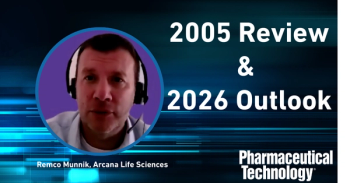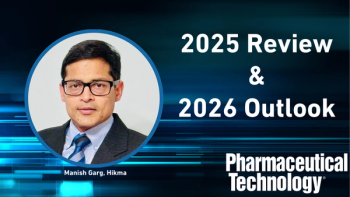
Pharmaceutical Technology Europe
- Pharmaceutical Technology Europe-11-01-2008
- Volume 20
- Issue 11
All change for drug distribution
Together, Europe and the US account for more than 70% of the global pharmaceutical market, and the growth of these markets is heavily dependent on distribution systems.
Together, Europe and the US account for more than 70% of the global pharmaceutical market, and the growth of these markets is heavily dependent on distribution systems. At present, major changes are taking place in the European and US drug distribution systems, which will have important consequences for everyone in the pharmaceutical sector.
Faiz Kermani
The players
To understand the implications of the dynamics in the distribution system, it is important to take a look at those that play a key role. In this respect, there are important distinctions between the European and US systems.1,2 Generally, most attention is focused on pharmaceutical manufacturers, wholesalers and pharmacists as it is the interaction between these that dictates the pharmaceutical distribution process.
In the traditional structure of the supply chain, pharmaceuticals are manufactured by pharmaceutical companies and transferred by wholesalers through to pharmacies. From a US perspective, Pharmacy Benefit Managers (PBMs) are also of great importance to the distribution network as their role is to achieve savings for customers by negotiating discounts and through cost-containment programmes. It has been estimated that approximately two-thirds of all prescriptions written in the US are processed by a PBM.
The pharmaceutical supply chain represents a high-value business, and manufacturers, wholesalers and pharmacists are constantly scrutinizing how the supply chain operates to achieve the maximum advantage for themselves. As with all buyer/supplier relationships, there is some degree of conflict between supply chain participants because of the varying objectives of the players involved. However, there are signs that the opinions of the different parties have diverged to such an extent that the make-up of the European and US supply chains are certain to change. Mistrust between manufacturers and wholesalers appears to be a growing feature of many European markets, while in the US changes are being driven by the most powerful wholesalers, who wish to achieve maximum dominance over the system through acquisitions.
Changes in the European market
Traditionally, manufacturers sell their products to wholesalers that then compete among themselves to become the main suppliers to pharmacies. However, the traditional model of pharmaceutical distribution is under threat because of major changes that have taken place in the UK.1
The main change is the adoption of a direct-to-pharmacy (DTP) model where pharmaceutical manufacturers sell their products directly to pharmacies and appoint a limited number of logistics service providers to deliver the medicines on their behalf. Pfizer's establishment of a DTP system in the UK involving Alliance UniChem signifies a new trend towards manufacturers establishing similar arrangements in other European countries and a number of other pharmaceutical companies are already setting up similar agreements.3 For pharmaceutical manufacturers, this model is ideal as it allows greater control over the supply chain.
With European governments limiting profits through cost-containment measures and companies facing gaps in revenue because of patent expiries, many believe that changing distribution arrangements makes commercial sense. IBM has calculated that supply chain operations can cost companies more than a third of revenues, including cost of goods, inventory and assets, while also consuming approximately half of their headcount.4 In addition, pharmaceutical companies have become increasingly irritated by parallel trade and are determined to gain control over the supply chain.
The author says...
As wholesaler turnover in the EU exceeds €135 billion each year, the move is unpopular as it has the potential to drive certain wholesalers out of business if they do not become a preferred option for major manufacturers.5 A number of wholesaler associations are lobbying at the highest levels within the EU to prevent manufacturers implementing changes in the supply chain. However, if the UK experience is representative, they are unlikely to succeed. An official inquiry by the Office of Fair Trading highlighted concerns that DTP could lead to rising costs for the UK's healthcare system and diminished distribution service,6 but no concrete action has been taken.
Changes in the US market
There is no appetite for DTP in the US market. Independent analyses of the US sector reveal that the huge financial investment required from pharmaceutical manufacturers to operate DTP has persuaded them to stick with the traditional system,2 as it is estimated that a comprehensive, US-wide direct distribution model would cost the equivalent of €35.3 billion to operate, assuming daily deliveries. This is a 15.5% increase on the cost of current distribution systems.
Valued at $275 billion (€203 billion) in 2008, the prescription drug wholesale industry in the US is highly concentrated, following a wave of consolidation in the sector. Cardinal Health Inc., McKesson Corp. and AmerisourceBergen Corp., which have benefited from this trend, are driving further change in the market. Popularly known as the 'Big Three', these companies account for 90–95% of revenue within the sector. As well as being the major customers for manufacturers, the Big Three are in a powerful position for controlling delivery to pharmacies and other outlets. This dominance worries regulators as they could form a monopoly or oligopoly in the US market. These companies distribute a full line of drug products nationwide and their combined annual 2007 revenue was in the order of a quarter trillion dollars. Since they buy the large majority of their drugs directly from the manufacturers of the products, they are defined as primary distributors. Despite their dominance, these organizations have surprisingly tight margins. Booz Allen Hamilton has calculated the gross margin for branded pharmaceuticals earned by primary distributors in the US at 3%.7
Despite their dominance, the Big Three continue to look for further acquisitions and market conditions favour a trend towards further consolidation. In particular, new regulations will restrict the activities of smaller distributors and may make them easier targets for the Big Three. Specifically, the 'pedigree' requirement of the Prescription Drug Marketing Act (PDMA), which came into effect in December 2006, may harm smaller distributors. The PDMA pedigree requirements necessitate that all prescription pharmaceutical transactions be accompanied by the appropriate paperwork, either going to the authorized distributor or to the manufacturer. According to PDMA's provisions, manufacturers and authorized distributors do not need a pedigree. From FDA's perspective, to qualify as an authorized distributor, a distributor must have an ongoing relationship with a manufacturer. Because of their volume of business this requirement is straightforward for the Big Three, but much harder for smaller competitors.
The Federal Trade Commission (FTC), which works to eliminate unfair or deceptive marketplace practices, has shown a renewed interest in the activities of the Big Three. In the late 1990s, FTC blocked McKesson's plans to buy Amerisource and Cardinal's attempt to take control of Bergen Brunswig. However, in 2001 FTC relaxed its position to allow Amerisource and Bergen Brunswig to merge. At this point, the Big Three controlled approximately 80% of the drug wholesale sector. What appears to have worried regulators is that the dominance of these companies has far outgrown their expectations. Although there is no evidence of any gross violations, there is the potential for the market to be distorted because of the activities of these companies, as four out of every five drugs sold in the US are said to pass through the hands of the Big Three. Furthermore, their influence appears to be growing as they branch out into other activities, such as the distribution of medical devices.
The growing concerns regarding the level of dominance of the Big Three led FTC to re-examine their activities.8 According to media reports, FTC has requested financial documents from McKesson's that were filed with the Securities and Exchange Commission. The investigations are likely to centre on whether the company has ever engaged in anticompetitive practices according to its filed statements. A similar investigation is reported to be occurring into the activities of Cardinal Health.
There is also a concern that the activities of the Big Three are contributing to higher drug prices, as these companies tend to deal in bulk purchases and deliveries. There has been speculation that smaller facilities will be unable to gain a supply of medicines at a reasonable price from these companies. There are also anecdotal stories in the US media of small pharmacies being cut off because of their orders not reaching the threshold desired by a large distributor.2
Outlook
The changes in the European and US supply chains suggest a bleak future for the traditional model of drug distribution. The uncertainty is caused by the complex relationship between each of the parties in the supply chain. Although they all depend on each other for maintaining the distribution system, they all wish to have greater control of the process of delivering medicines to patients. Pharmaceutical manufacturers and pharmacists have their own opinions regarding the structure of the supply chain and their actions to reinforce their views will shape the future of the system.
References
1. F. Kermani, Pharmaceutical Distribution in Europe: The Emergence of Direct-to-Pharmacy Supply (Urch Publishing, London, UK, 2008).
2. F. Kermani, Pharmaceutical Distribution in the United States (Urch Publishing, London, UK, 2008).
3. Anon., The Pharmaceutical Journal, 277(7431), 725 (2006).
4. J. Predendergast et al., Pharma 2010: The value-creating supply chain (IBM, New York, NY, USA, 2008).
5. PGEU, "PGEU Statement: Direct To Pharmacy Distribution. The Pharmaceutical Group of the European Union" (2007).
6. Medicines distribution: An OFT Market Study (Office of Fair Trading, UK, 2007).
7. R. Britt, "Growing share of 'Big Three' gets federal attention" (2007).
8. The Role of Distributors in the U.S. Healthcare Industry (The Healthcare Distribution Management Association, Arlington, VA, USA, 2008).
Articles in this issue
about 17 years ago
Developing nanoparticle formulations or poorly soluble drugsabout 17 years ago
Is Pharma recession-proof?about 17 years ago
20th Anniversary Special Feature: The impact of regulationsabout 17 years ago
New Jerseyabout 17 years ago
Michiganabout 17 years ago
Manufacturing problemsabout 17 years ago
The beginning of the endabout 17 years ago
It's showtimeabout 17 years ago
Pennsylvaniaabout 17 years ago
Western promisesNewsletter
Get the essential updates shaping the future of pharma manufacturing and compliance—subscribe today to Pharmaceutical Technology and never miss a breakthrough.




